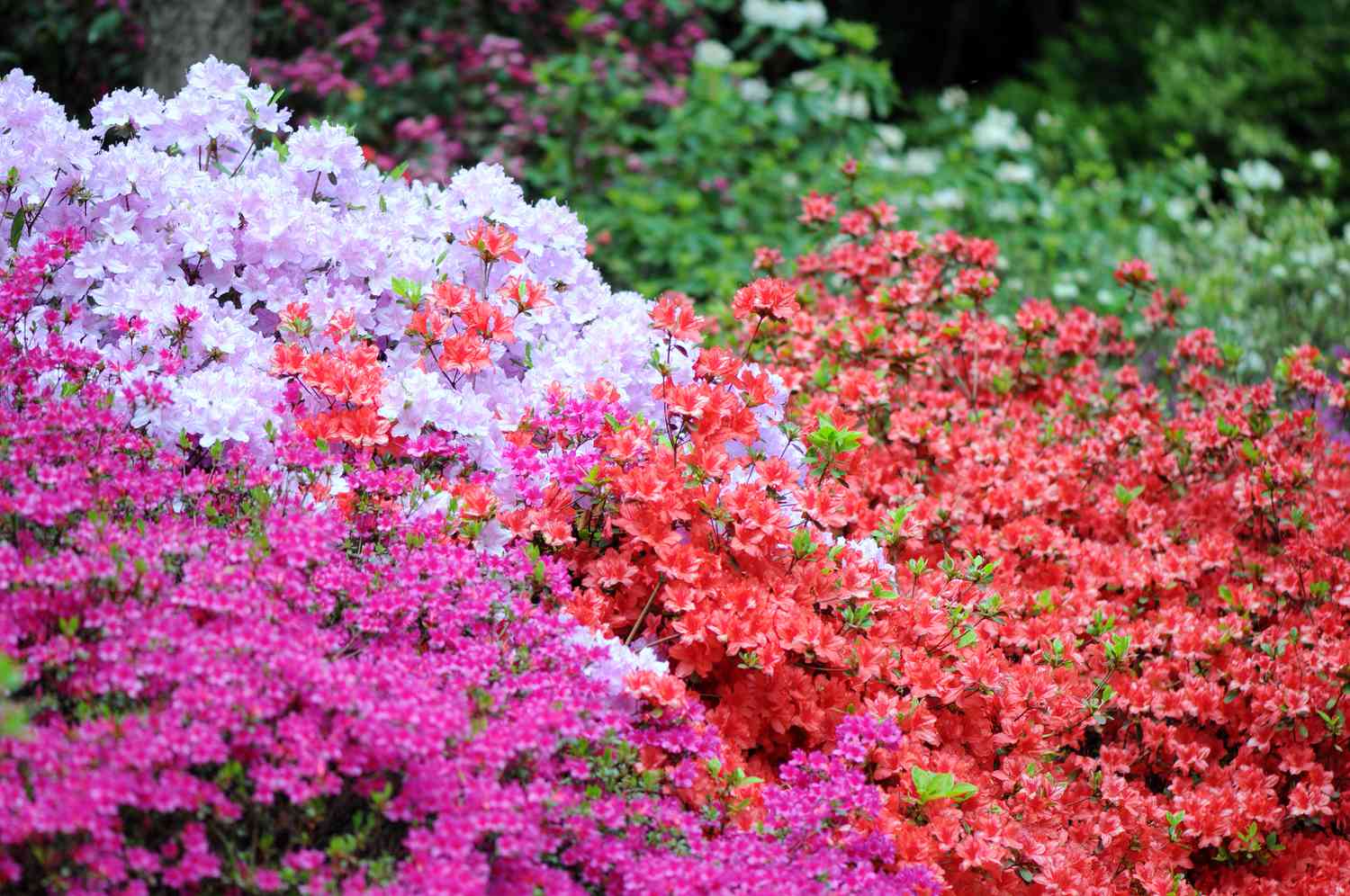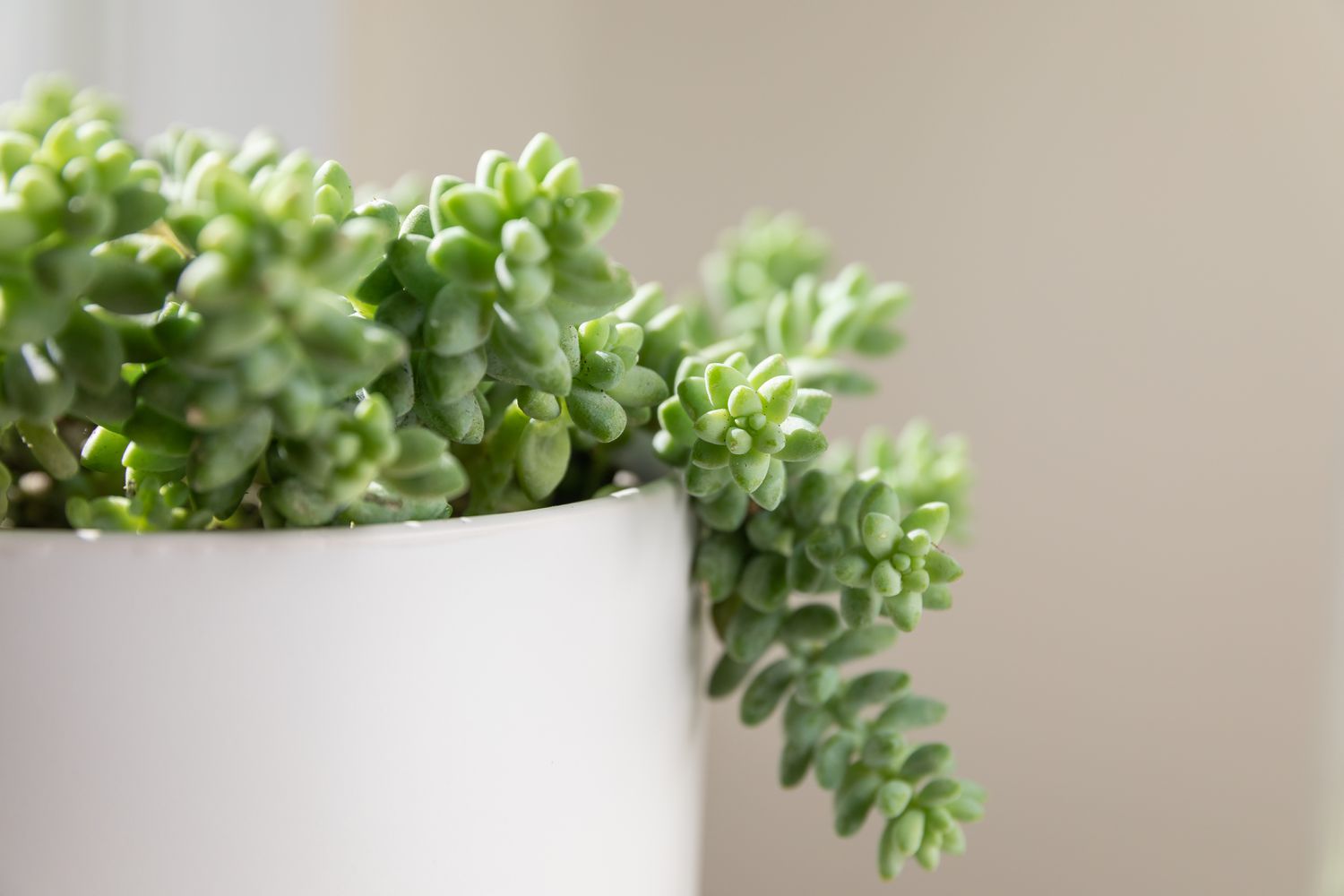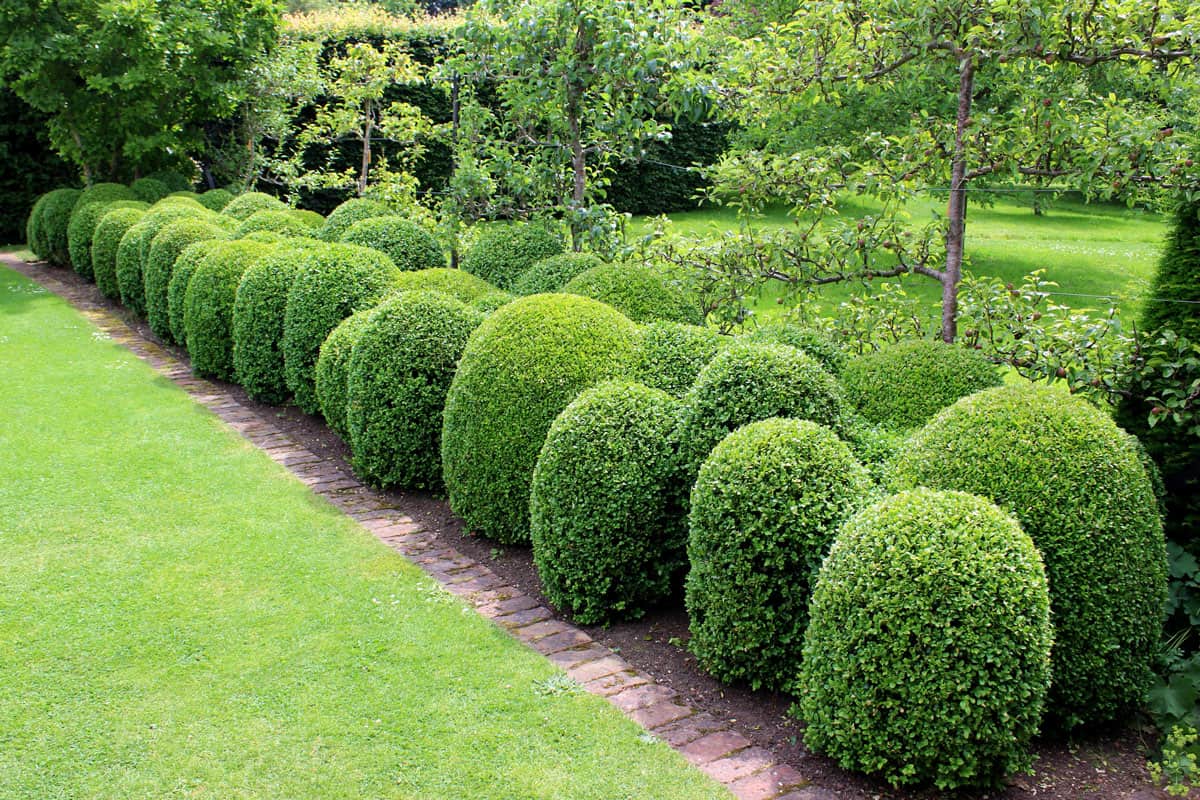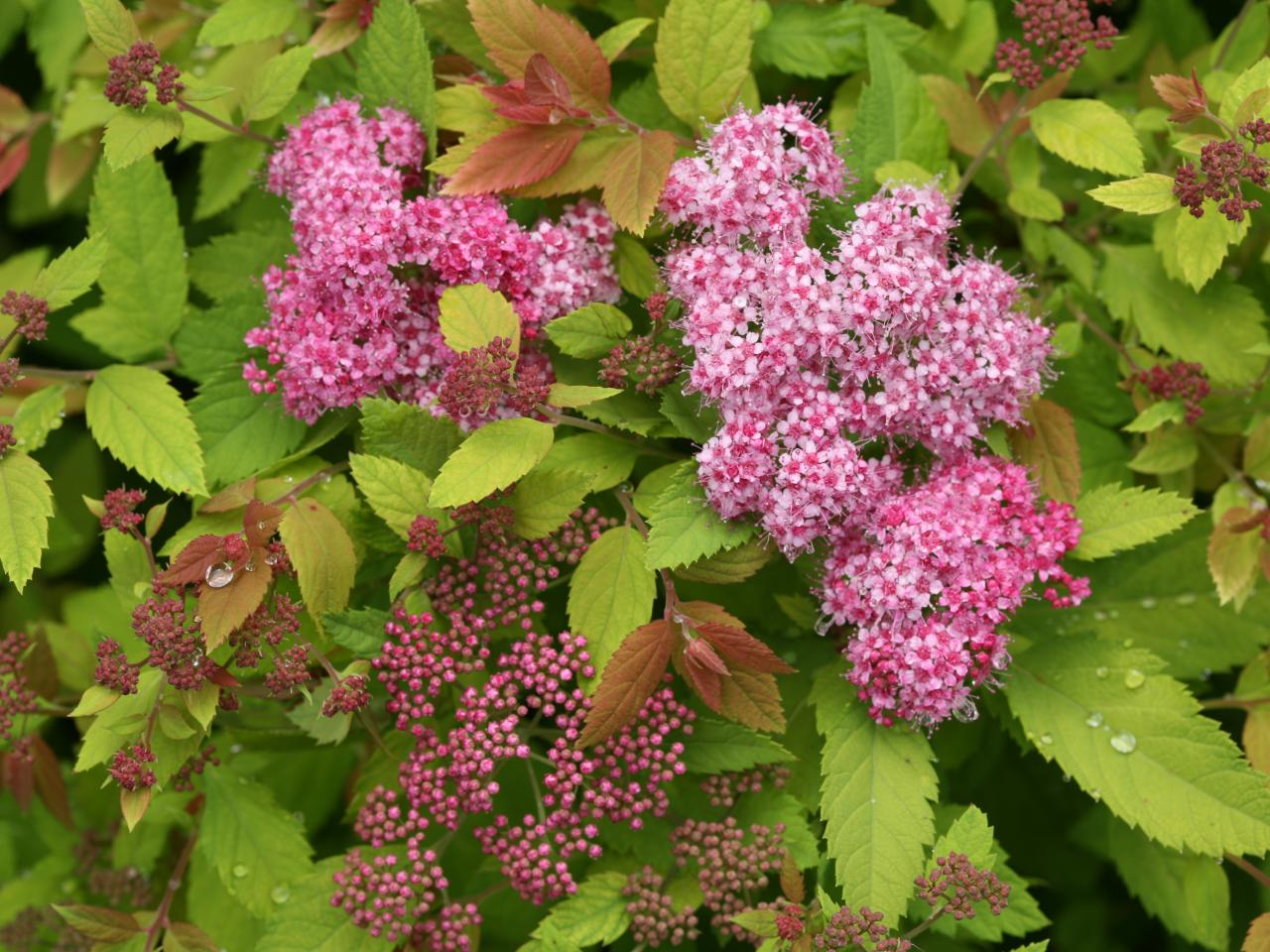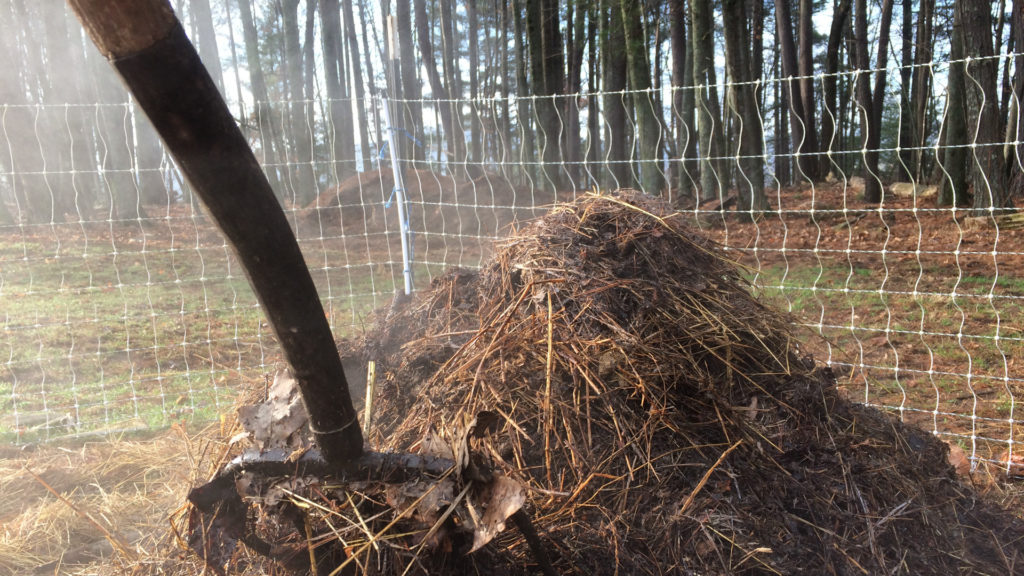Home>Types of Gardening>Ornamental Gardening>How Fast Do Shrubs Grow
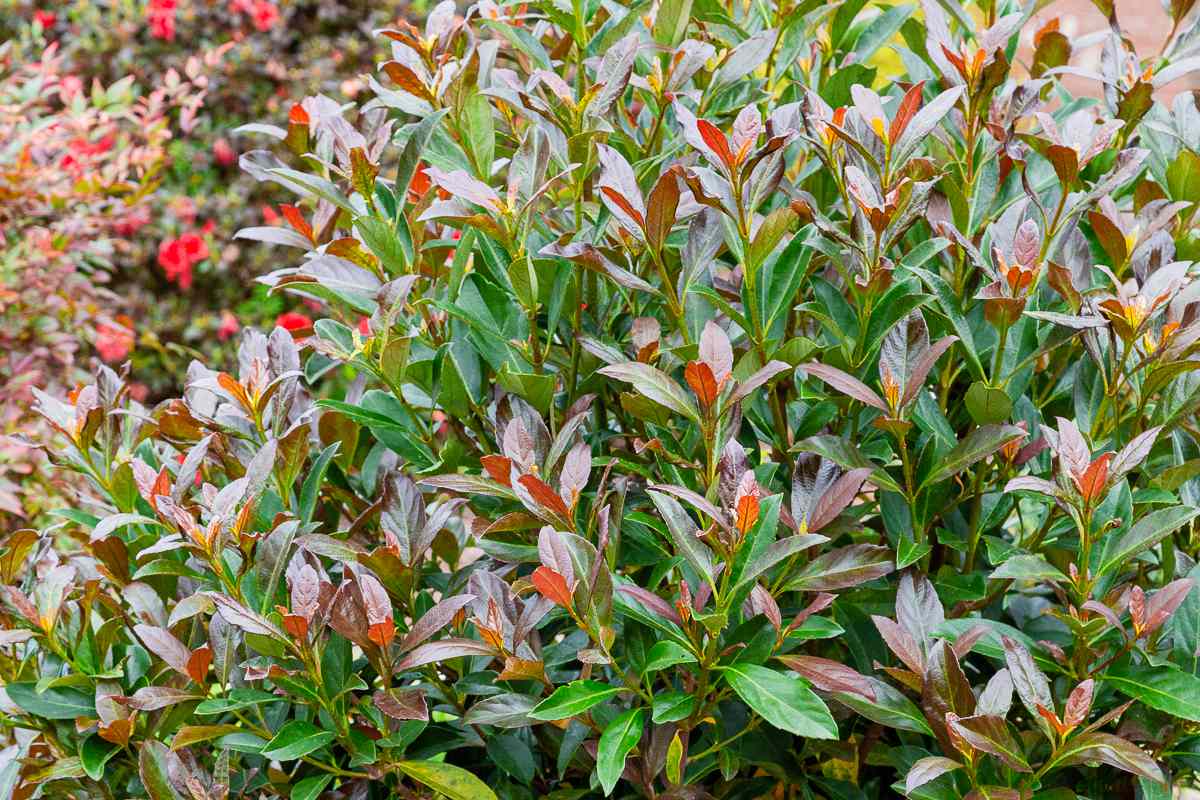

Ornamental Gardening
How Fast Do Shrubs Grow
Modified: January 22, 2024
Learn about the growth rate of shrubs in ornamental gardening, including tips for cultivating faster growth.
(Many of the links in this article redirect to a specific reviewed product. Your purchase of these products through affiliate links helps to generate commission for Chicagolandgardening.com, at no extra cost. Learn more)
Table of Contents
- Introduction
- Factors Influencing Shrub Growth
- The Role of Genetics in Shrub Growth
- Environmental Conditions and Their Impact on Shrub Growth
- Nutrient Availability and Its Effect on Shrub Growth
- Water Requirements for Shrub Growth
- Pruning and Its Influence on Shrub Growth
- Common Shrub Species and Their Growth Rates
- Case Studies on Shrub Growth Rates
- Conclusion
Introduction
Welcome to the world of ornamental gardening, where beauty meets nature in the form of stunning shrubs. Adding shrubs to your garden not only enhances its aesthetics but also provides privacy, shade, and wildlife habitats. If you’re considering incorporating shrubs into your landscape, it’s essential to understand how fast these plants grow.
Shrubs are woody plants characterized by multiple stems and a relatively low height compared to trees. They come in various shapes, sizes, and foliage, ranging from evergreen to deciduous. One of the key factors to consider when choosing shrubs is their growth rate, as it determines how quickly they will reach their mature size.
While shrub growth rate may vary depending on various factors, it can generally be categorized into slow, moderate, and fast growing shrubs. Understanding the growth rate of different shrub species is crucial for planning and designing your garden.
In this article, we will explore the factors that influence shrub growth and learn how to optimize their growth potential. We will also look at some common shrub species and their growth rates to help you make informed decisions when selecting plants for your garden.
Whether you’re a seasoned gardener or new to the world of ornamental gardening, this article will provide you with valuable insights on how fast shrubs can grow and how to maximize their growth potential. So, let’s dive in and discover the secrets of shrub growth!
Factors Influencing Shrub Growth
The growth rate of shrubs is influenced by several factors, both internal and external. Understanding these factors can help you create the optimal conditions for your shrubs to thrive. Let’s explore the key factors that influence shrub growth:
1. Genetics:
Just like humans, shrubs inherit genetic traits from their parent plants. These genetic traits determine the growth rate, size, and overall characteristics of the shrub. Some shrub species naturally have a faster growth rate, while others are genetically predisposed to grow slower. When selecting shrubs for your garden, it’s essential to consider the genetic potential for growth.
2. Environmental Conditions:
The environment plays a significant role in shaping shrub growth. Factors such as sunlight, temperature, and humidity can have a direct impact on how fast shrubs grow. Most shrubs thrive in full sun or partial shade, with specific sunlight requirements varying depending on the species. Temperature extremes can hinder growth, so understanding the hardiness zone for each shrub species is crucial for optimal growth.
3. Nutrient Availability:
Nutrients are vital for the growth and development of shrubs. Essential nutrients such as nitrogen, phosphorus, and potassium are necessary for healthy foliage, root development, and overall plant growth. Poor soil fertility or imbalanced nutrients can slow down shrub growth. Conducting a soil test and providing the necessary amendments can ensure that your shrubs have access to the nutrients they need to thrive.
4. Water Requirements:
Proper watering is crucial for shrub growth. The water needs of shrubs can vary depending on the species, soil type, and weather conditions. While some shrubs prefer wetter soil, others thrive in more arid conditions. Consistent watering, avoiding both under-watering and over-watering, is essential for encouraging healthy growth in shrubs.
5. Pruning:
Pruning is a common practice in ornamental gardening that can influence shrub growth. Proper pruning techniques can stimulate growth, remove dead or diseased branches, and shape the shrub to enhance its aesthetic appeal. However, excessive or improper pruning can stunt growth and weaken the plant. Understanding the specific pruning requirements of each shrub species is important for maintaining its health and promoting growth.
By taking these factors into account and providing the necessary care, you can create optimal conditions for your shrubs to flourish. Now that we have explored the factors that influence shrub growth, let’s delve into the role of genetics in more detail.
The Role of Genetics in Shrub Growth
Genetics plays a fundamental role in the growth and development of shrubs. The unique genetic makeup of each shrub species determines its growth rate, size, form, and other characteristics. Let’s dive deeper into the role of genetics in shaping shrub growth.
Each shrub species inherits genetic traits from its parent plants. These traits can influence various aspects of growth, such as the rate at which new stems and branches develop, the size and shape of the foliage, and the overall height and spread of the shrub. Some shrub species have evolved to grow rapidly, allowing them to quickly establish themselves in their natural habitats, while others grow at a slower pace.
Genetic factors also influence the response of shrubs to environmental conditions. Some shrub species are more adaptable and resilient, able to thrive in a wide range of climates and soil conditions. These genetic adaptations enable them to withstand harsh weather, resist diseases and pests, and maintain growth even in challenging environments.
Additionally, genetics can affect the longevity of shrubs. Some species are genetically predisposed to have a longer lifespan, while others may have a shorter lifespan due to natural aging or environmental factors. Understanding the genetic characteristics of different shrub species can help gardeners make informed decisions regarding plant selection and care.
While genetics provide the blueprint for shrub growth, it’s important to note that external factors, such as environmental conditions and proper plant care, also play a significant role in realizing the full growth potential of shrubs. Even shrubs with a genetically predisposed fast growth rate may not reach their full potential if they are not provided with suitable nutrient levels, adequate water, and the right pruning and maintenance practices.
By selecting shrub species with desirable genetic traits and providing the optimal environmental conditions and care, gardeners can maximize the growth potential of their shrubs. This combination of genetic potential and environmental factors allows for the creation of beautiful, healthy, and thriving shrub displays in gardens and landscapes.
Now that we have explored the role of genetics in shrub growth, let’s move on to understand how environmental conditions can impact the growth of shrubs.
Environmental Conditions and Their Impact on Shrub Growth
The growth of shrubs is greatly influenced by the environmental conditions in which they are planted. Factors such as sunlight, temperature, humidity, and wind can have a profound impact on the growth and development of shrubs. Understanding these environmental conditions and their effects is crucial for ensuring the success of your shrubs. Let’s explore how different environmental factors impact the growth of shrubs.
1. Sunlight:
Sunlight is one of the most critical environmental factors for shrub growth. Most shrubs require a certain amount of sunlight to carry out photosynthesis, the process by which they convert sunlight into energy. Full sun exposure is typically necessary for optimal growth of flowering shrubs, while some shade-tolerant shrubs may thrive in partial shade. Lack of sunlight can lead to weak growth, fewer flowers, and leggy, stretched-out stems. Therefore, it’s essential to select shrub species that are well-suited to the sunlight conditions in your garden.
2. Temperature:
Temperature plays a significant role in the growth and survival of shrubs. Different shrub species have specific temperature requirements, often categorized by hardiness zones. Extreme temperatures, whether too hot or too cold, can stress shrubs and hinder their growth. Frost and freezing temperatures can damage tender shrubs, while excessive heat can cause wilting and dehydration. Understanding the temperature conditions in your region and selecting shrub species that are adapted to those conditions is crucial for promoting healthy growth.
3. Humidity:
Humidity levels affect the transpiration process in shrubs, which is the loss of moisture through their leaves. High humidity can inhibit the transpiration process, causing excess moisture to accumulate on the leaves and leading to fungal diseases. On the other hand, low humidity can result in faster transpiration, leading to dehydration and wilting. It is important to choose shrub species that are well-suited to the humidity levels in your region and provide adequate air circulation to prevent moisture-related problems.
4. Wind:
Wind can have both positive and negative effects on shrub growth. Gentle breezes can help strengthen the stems of shrubs, making them more resilient to stress. However, strong winds can cause physical damage to the branches, breakage, and uprooting. Windy conditions can also increase moisture loss through transpiration, putting additional stress on shrubs. Providing windbreaks, such as fences or other plants, can help protect vulnerable shrubs and create a more suitable microclimate for growth.
Understanding and managing the environmental conditions in your garden is essential for promoting healthy shrub growth. By selecting shrub species that are suitable for your specific climate and providing adequate sunlight, temperature regulation, humidity control, and wind protection, you can create an environment that allows your shrubs to thrive.
Next, let’s explore the impact of nutrient availability on shrub growth and how to ensure your shrubs have access to the essential nutrients they need.
Nutrient Availability and Its Effect on Shrub Growth
Nutrient availability is a crucial factor that directly affects the growth and overall health of shrubs. Just like humans, shrubs require essential nutrients to grow, develop, and thrive. These nutrients, including nitrogen, phosphorus, potassium, and others, play vital roles in various plant functions. Let’s explore the impact of nutrient availability on shrub growth and how to ensure your shrubs have access to the necessary nutrients.
1. Nitrogen (N):
Nitrogen is a key nutrient that supports foliage growth and overall plant vigor. It is necessary for the production of chlorophyll, the pigment responsible for the green color of leaves. Shrubs with insufficient nitrogen may exhibit pale or yellowing foliage, stunted growth, and reduced flower production. Adding a nitrogen-rich fertilizer can help correct nitrogen deficiencies and promote healthy shrub growth.
2. Phosphorus (P):
Phosphorus is essential for root development, energy transfer, and flower formation in shrubs. Lack of phosphorus can result in poor root growth, weak stems, and reduced flowering. Applying a phosphorus-rich fertilizer can help replenish this nutrient and stimulate overall shrub growth and flowering performance.
3. Potassium (K):
Potassium contributes to the overall health and resilience of shrubs. It is involved in important processes such as water and nutrient uptake, disease resistance, and the regulation of overall plant functions. Shrubs lacking potassium may exhibit symptoms such as weak stems, scorched leaf margins, reduced flower quality, and increased susceptibility to pests and diseases. Applying a balanced fertilizer containing potassium can help ensure optimal growth and vigor in shrubs.
4. Secondary and Micronutrients:
In addition to the primary nutrients mentioned above, shrubs also require secondary nutrients like calcium, magnesium, and sulfur, as well as micronutrients such as iron, zinc, and manganese. While these nutrients are needed in smaller quantities, their deficiency can still have significant impacts on shrub growth. Conducting a soil test can help identify any nutrient deficiencies, allowing you to supplement the soil with the necessary nutrients through fertilizers or organic amendments.
It is important to note that excessive nutrient application can be detrimental to shrub growth and can lead to nutrient imbalances or toxicity. Following proper fertilization guidelines and understanding the specific nutrient requirements of different shrub species is key to maintaining a healthy nutrient balance.
By ensuring a sufficient and balanced supply of nutrients, you can support optimal shrub growth, promote healthy foliage development, and enhance the overall beauty of your garden.
Now that we have explored the impact of nutrient availability, let’s move on to discuss the importance of water requirements for shrub growth.
Water Requirements for Shrub Growth
Water is essential for the growth and survival of shrubs. Proper watering practices are crucial for maintaining healthy shrubs and ensuring optimal growth. Understanding the water requirements of shrubs is key to providing them with the necessary moisture for their growth. Let’s explore the importance of water for shrub growth and how to ensure they receive adequate hydration.
1. Establishing Roots:
Water is vital during the early stages of shrub growth, especially during the establishment phase. When shrubs are first planted, their root systems are still developing and are not yet capable of extracting sufficient water from the soil. Regular watering helps facilitate root development and increases the chances of successful establishment.
2. Hydration and Photosynthesis:
Water plays a crucial role in photosynthesis, the process by which plants convert sunlight into energy. Shrubs need a sufficient water supply to carry out this process effectively. Without enough water, shrubs may experience reduced photosynthesis, leading to weakened growth, drooping leaves, and a decrease in overall health and vigor.
3. Transpiration:
Transpiration is the process by which shrubs release water vapor through their leaves. It helps cool the plant and regulates its internal temperature. Adequate water supply ensures proper transpiration, which is crucial for maintaining healthy foliage and preventing leaf wilting or drying out.
4. Water Stress:
Insufficient water can lead to water stress in shrubs. This can result in wilted or limp leaves, stunted growth, and increased susceptibility to diseases and pests. On the other hand, over-watering can lead to root rot and other issues. It is important to find the right balance and provide shrubs with consistent watering, allowing the soil to dry out slightly before the next watering session.
5. Watering Techniques:
Proper watering techniques can help ensure that shrubs receive adequate hydration. It is generally recommended to water deeply and infrequently, allowing the water to penetrate the root zone. This promotes deep root growth and helps shrubs become more drought-tolerant. Applying mulch around the base of shrubs can also help retain moisture in the soil and reduce water loss through evaporation.
It’s important to note that different shrub species have varying water requirements. Some shrubs are more drought-tolerant and can thrive with less frequent watering, while others require more regular watering. Understanding the specific water needs of the shrubs in your garden is crucial for their well-being.
By providing the right amount of water at the right frequency, you can ensure that your shrubs remain healthy, vibrant, and resilient against drought conditions. Now, let’s explore the influence of pruning on shrub growth.
Pruning and Its Influence on Shrub Growth
Pruning is an essential practice in maintaining the health and aesthetics of shrubs. It involves selectively removing certain stems and branches to shape the shrub, promote healthy growth, and enhance its overall appearance. Pruning has a significant influence on shrub growth, and understanding its benefits and techniques can help you maximize the potential of your shrubs.
1. Encourages Healthy Growth:
Pruning stimulates new growth in shrubs by removing dead, damaged, or diseased branches. By eliminating these unhealthy or non-productive parts, the shrub can redirect its resources towards new growth, ensuring that energy is efficiently distributed to vital areas. This results in a healthier and more vigorous shrub.
2. Controls Size and Shape:
Pruning allows gardeners to control the size and shape of shrubs, ensuring they fit well within the allocated space and complement the overall design of the landscape. Regular pruning can prevent shrubs from becoming overgrown and maintain a neat and attractive appearance. By selectively cutting back long and unruly branches, pruning enables shrubs to maintain a more compact and manageable form.
3. Enhances Flowering and Fruiting:
Proper pruning can promote increased flower and fruit production in shrubs. Some shrubs produce flowers and fruits on new growth, so pruning stimulates the development of fresh, flowering branches. By removing old, woody stems, pruning can rejuvenate shrubs, leading to a more abundant and vibrant display of flowers or fruits.
4. Improves Air Circulation and Sunlight Penetration:
Pruning helps to improve air circulation and sunlight penetration within the shrub. By selectively thinning out dense areas, pruning allows better airflow, reducing the risk of fungal diseases that thrive in damp environments. Moreover, removing overcrowded branches increases sunlight exposure to inner parts of the shrub, ensuring that all sections receive sufficient light for photosynthesis and optimal growth.
5. Timing and Techniques:
The timing and techniques of pruning can greatly impact shrub growth. Most shrubs are pruned during their dormant season, which is typically in late winter or early spring before new growth begins. However, some shrubs may require specific pruning times based on their flowering patterns. Using the right pruning tools and techniques, such as making clean cuts and following proper pruning angles, ensures minimal damage to the plant and promotes faster healing.
It’s important to note that excessive or improper pruning can have negative effects on shrub growth. Over-pruning, known as “topping,” can weaken the shrub, reduce its vitality, and lead to an unbalanced appearance. It is crucial to understand the specific pruning requirements of each shrub species and follow proper pruning practices to achieve the desired results.
By implementing regular and well-executed pruning, you can shape your shrubs, encourage healthy growth, improve flowering and fruiting, and contribute to the overall beauty and longevity of your garden.
Next, let’s delve into some common shrub species and their growth rates to provide you with more specific insights into the growth potential of various shrubs.
Common Shrub Species and Their Growth Rates
There is a wide variety of shrub species available, each with its own unique growth characteristics. Understanding the growth rates of common shrub species can help you plan and design your garden more effectively. Let’s explore some popular shrub species and their respective growth rates.
1. Forsythia (Forsythia spp.):
Forsythia is a deciduous shrub known for its vibrant yellow flowers that bloom in early spring. It is considered a fast-growing shrub, with an average growth rate of around 2 to 3 feet per year. Forsythia can reach a mature height and width of 8 to 10 feet, making it an excellent choice for hedges or borders.
2. Boxwood (Buxus spp.):
Boxwood is a popular evergreen shrub known for its dense foliage and ability to be pruned into various shapes. It has a moderate growth rate, with an average annual growth of around 4 to 6 inches. Boxwood can reach a mature height and width of 3 to 6 feet, depending on the specific variety.
3. Hydrangea (Hydrangea spp.):
Hydrangea is a versatile shrub that produces large, showy blooms. Different species of hydrangea have varying growth rates. Smooth Hydrangea (Hydrangea arborescens) has a moderate growth rate of around 1 to 2 feet per year, while Oakleaf Hydrangea (Hydrangea quercifolia) and Bigleaf Hydrangea (Hydrangea macrophylla) grow at a slower pace of around 6 to 12 inches per year. Mature sizes also vary, with heights ranging from 3 to 10 feet, depending on the species.
4. Azalea (Rhododendron spp.):
Azaleas are popular flowering shrubs known for their vibrant and beautiful blooms. The growth rate of azaleas can vary depending on the variety and growing conditions. Generally, they have a moderate growth rate of around 6 to 12 inches per year. Azaleas can reach a mature height and width of 2 to 6 feet, making them suitable for foundation plantings, borders, and mass plantings.
5. Juniper (Juniperus spp.):
Junipers are evergreen shrubs with a wide range of varieties, offering different growth rates. Some juniper species and cultivars are considered slow-growing, with an average growth rate of 3 to 6 inches per year. Others, like the Common Juniper (Juniperus communis), can grow at a moderate rate of around 1 to 2 feet per year. Mature sizes can range from 3 to 20 feet in height and 4 to 15 feet in width, depending on the specific cultivar.
These are just a few examples of common shrub species and their respective growth rates. It’s important to research and consider the growth characteristics of specific shrubs when planning your garden, ensuring that they align with your desired objectives and available space.
Now, let’s move on to explore some case studies on shrub growth rates to provide real-life examples of how different factors can influence the growth of shrubs.
Case Studies on Shrub Growth Rates
Examining real-life case studies of shrub growth rates can provide valuable insights into the factors influencing their growth. The following examples highlight how different factors, such as species, environmental conditions, and care practices, can affect the growth rates of shrubs.
Case Study 1: Dwarf Korean Lilac (Syringa meyeri ‘Palibin’):
The Dwarf Korean Lilac is a compact deciduous shrub known for its fragrant purple flowers. In one case study, this shrub was planted in a garden with full sun exposure and well-draining soil. With proper care, including regular watering, well-balanced fertilization, and appropriate pruning, it exhibited a moderate growth rate of around 6 to 8 inches per year. Within five years, it reached a mature height and width of around 4 to 6 feet, forming a dense and visually appealing shrub.
Case Study 2: Rose of Sharon (Hibiscus syriacus):
In another case study, several Rose of Sharon shrubs were planted in different locations within a garden. The shrubs planted in full sun exposure with regular watering displayed a fast growth rate of approximately 2 to 3 feet per year. However, those planted in partially shaded areas and receiving less water grew at a slower rate, only reaching an average growth of 1 to 2 feet per year. This case study illustrates how environmental conditions, specifically sunlight and irrigation, influenced the growth rates of the shrubs.
Case Study 3: Rhododendron (Rhododendron spp.):
A case study on different Rhododendron species showed varying growth rates depending on the specific cultivars. Some Rhododendron varieties, such as ‘PJM Elite’ and ‘Nova Zembla,’ displayed a moderate growth rate of 6 to 12 inches per year. However, slower-growing varieties like ‘Yakushimanum’ reached an average height increase of only 2 to 4 inches per year. This case study highlights the importance of selecting shrub species and cultivars based on desired growth rates and preferences.
These case studies illustrate how factors such as species characteristics, environmental conditions, and care practices can influence the growth rates of shrubs. It’s important to conduct research and consider these factors when planning and maintaining your own garden, ensuring the optimal growth and health of your shrubs.
Now that we have explored case studies, let’s conclude by summarizing the key insights gained from our discussion on shrub growth rates.
Conclusion
Understanding the growth rates of shrubs is essential for successful ornamental gardening. The factors influencing shrub growth, such as genetics, environmental conditions, nutrient availability, watering, and pruning practices, play crucial roles in maximizing the growth potential of shrubs in your garden.
Genetics determine the inherent growth rate and characteristics of shrubs, while environmental conditions, including sunlight, temperature, humidity, and wind, directly impact their growth. Providing the right nutrients and water in appropriate amounts ensures that shrubs have the necessary resources for healthy development. Pruning helps maintain the shape, health, and flowering of shrubs, while also influencing their growth rate.
By selecting shrubs with desirable growth rates and characteristics, understanding their specific environmental requirements, and implementing proper care practices, you can create a thriving and visually appealing garden. Case studies have shown how different factors, such as species, environmental conditions, and care practices, can influence the growth rates of shrubs. Being aware of these factors allows you to make informed decisions and provide the optimal conditions for your shrubs to flourish.
Remember to research the growth rates of specific shrub species, consider their suitability for your garden, and plan accordingly. By striking a balance between the desired growth rate and other factors, you can create a harmonious landscape that showcases the beauty and growth potential of shrubs.
So, whether you’re aiming to create a lush hedge, add a burst of color to your garden, or establish a focal point, understanding shrub growth rates and implementing proper care techniques will help you achieve your goals. Embrace the world of ornamental gardening, unleash your creativity, and watch your shrubs grow into stunning additions to your outdoor space.
